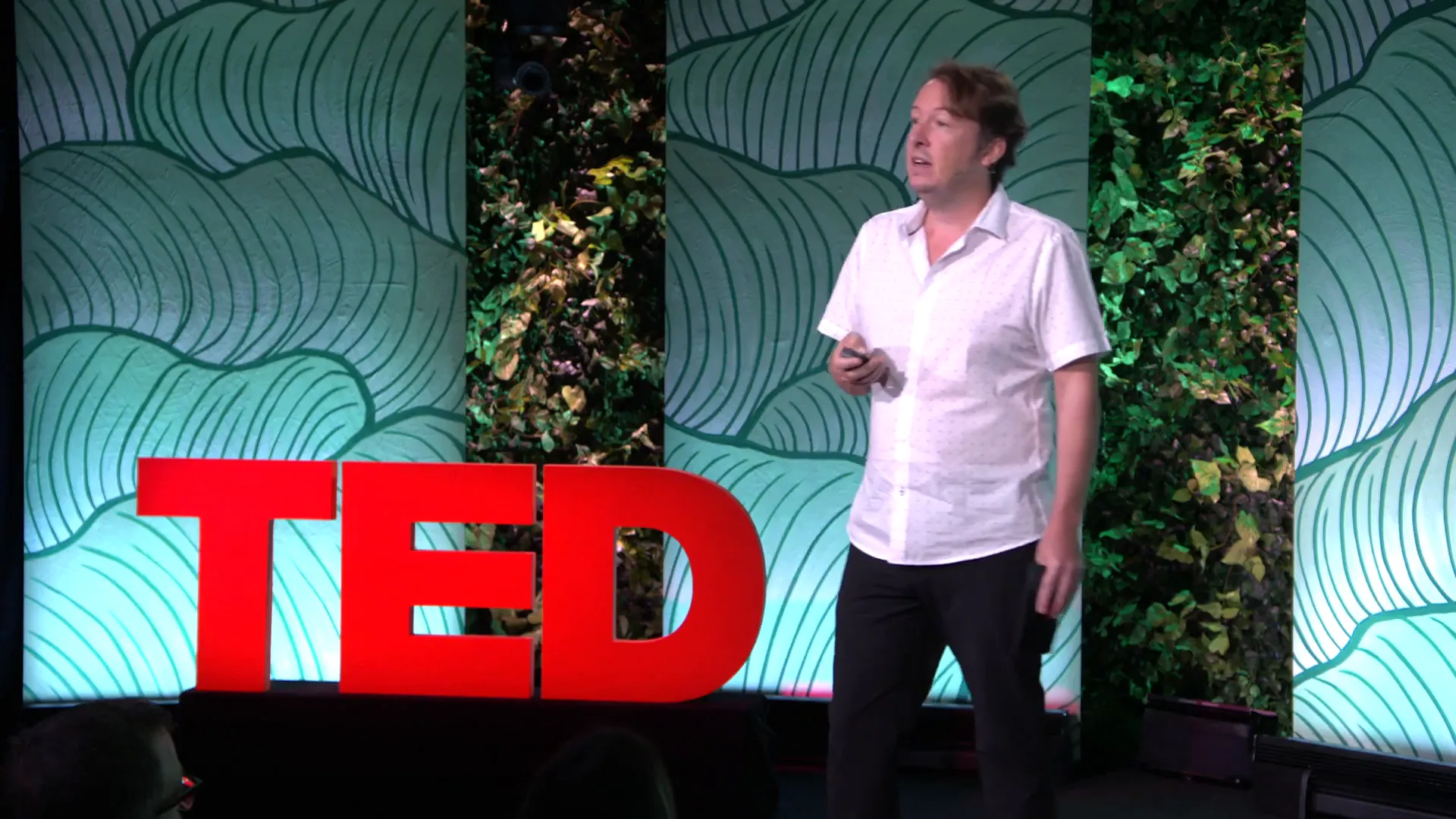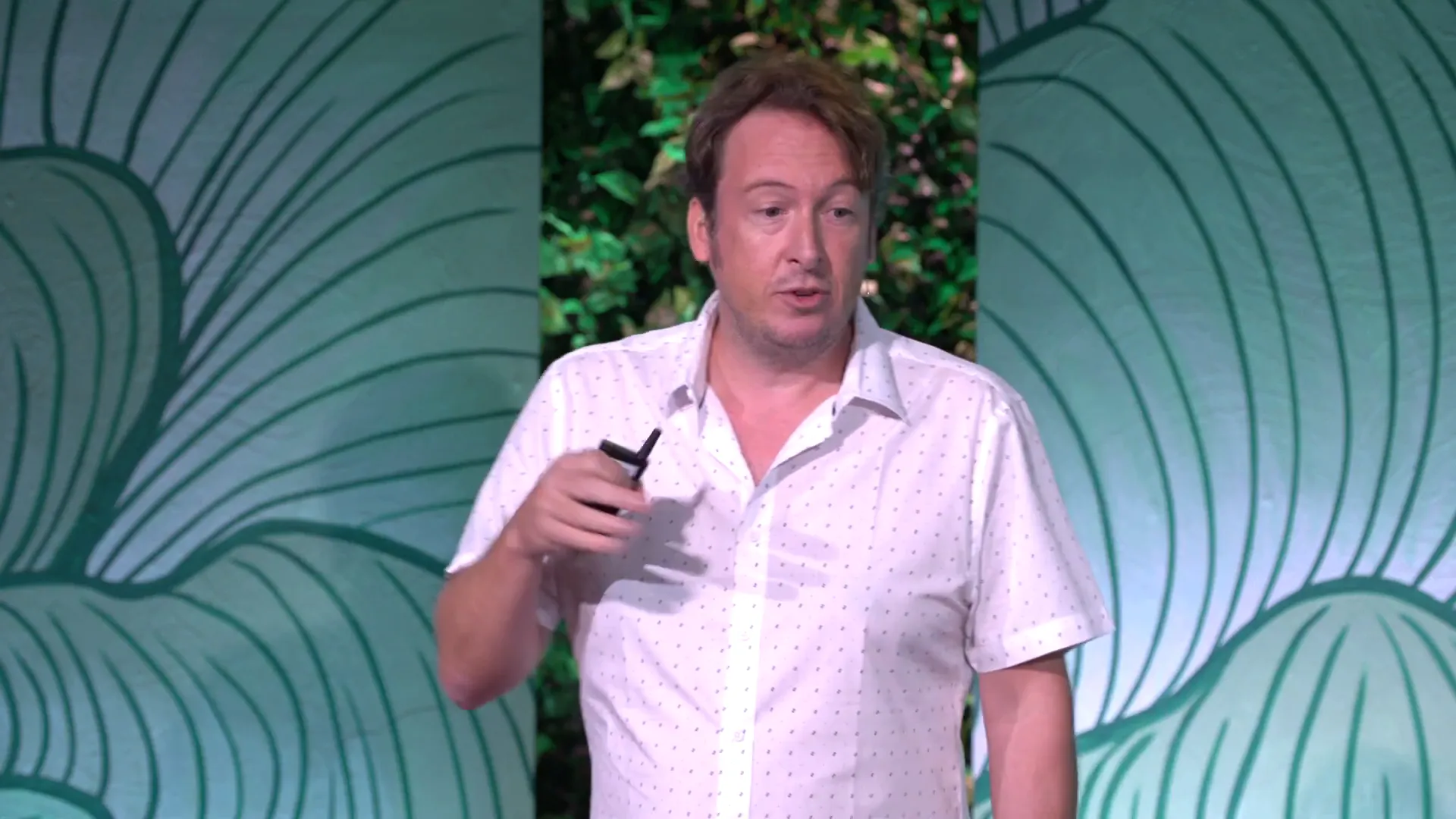May 20, 2025
Feeding the Future: Sustainable Solutions for a Growing Population
As the global population approaches 10 billion, the challenge to provide sustainable, nutritious food without harming our planet becomes increasingly urgent. In this blog, we explore innovative approaches to food production that prioritize environmental sustainability while catering to diverse dietary needs.
The Importance of Rethinking Food Production
With the world population projected to reach 10 billion by 2050, the methods we use to produce food are under scrutiny. Traditional agricultural practices, heavily reliant on animal farming, are proving unsustainable. Rethinking food production is not just an option; it's a necessity.
Modern agriculture must prioritize sustainability, efficiency, and health. This means exploring innovative solutions that minimize environmental impact while maximizing nutritional value. One key area of focus is protein production, which is central to human diets globally.
The Challenge of Feeding 10 Billion
The challenge of feeding a growing population is daunting. Current agricultural practices are not equipped to handle the projected increase in food demand without causing significant harm to our planet. The need for sustainable solutions is more pressing than ever.
To address this challenge, we must consider alternative sources of protein. Traditional livestock farming consumes vast amounts of resources and contributes heavily to greenhouse gas emissions. By shifting our focus towards alternative proteins, we can mitigate these effects while still providing nutritious food for all.
Understanding the Role of Protein
Protein is essential for human health, contributing to growth, repair, and overall well-being. However, our current methods of sourcing protein, primarily from animal agriculture, are not sustainable. With over one-third of global emissions attributed to food production, and half of that stemming from animal agriculture, it is clear we need a new approach.
As we explore alternative protein sources, we must remember that not all proteins are created equal. The quality, digestibility, and nutritional content of protein sources play a critical role in their effectiveness in human diets.
The Environmental Impact of Animal Agriculture
Animal agriculture is one of the leading contributors to environmental degradation. It requires extensive land and water resources, leading to deforestation, loss of biodiversity, and water scarcity. Furthermore, it contributes significantly to greenhouse gas emissions, exacerbating climate change.
Current projections indicate that by 2050, the demand for animal-based protein will increase by over 50%. This trajectory is unsustainable, and if we continue down this path, we risk irreversible damage to our planet.
Alternative Proteins: A Viable Solution
Alternative proteins present a promising solution to the challenges posed by traditional animal agriculture. These include plant-based proteins, fermentation-derived proteins, and cultivated meats. Each of these alternatives offers unique benefits in terms of sustainability and nutrition.
- Plant-Based Proteins: Foods like soy, lentils, and peas provide rich protein sources with a significantly lower environmental footprint.
- Fermentation: Utilizing microorganisms to produce protein can lead to innovative food sources with minimal resource use.
- Cultivated Meat: This emerging technology allows for the production of meat without the need for raising and slaughtering animals, potentially revolutionizing our food systems.
Exploring Plant-Based Products
Plant-based products are leading the charge in the alternative protein movement. From burgers made of soy to bacon alternatives crafted from peas, these innovations are already available in the market. They offer consumers a chance to enjoy familiar flavors and textures while reducing their ecological footprint.
The production of plant-based proteins typically requires fewer resources than traditional animal farming. For example, they use less water and land, and produce significantly lower greenhouse gas emissions. Embracing plant-based diets can be a crucial step toward a sustainable future.

As we continue to innovate in this space, it’s essential to focus on improving the taste and texture of plant-based products. Consumer acceptance hinges on how well these alternatives can mimic traditional meat products. By utilizing advanced food technology, we can create plant-based options that satisfy a wide range of palates.
The Power of Fermentation
Fermentation, a technique that has been used for thousands of years, is gaining renewed attention in the quest for sustainable protein sources. This ancient practice transforms raw ingredients into nutrient-rich foods through the action of microorganisms like bacteria, yeast, and fungi.
Modern fermentation is revolutionizing food production by enabling the creation of high-quality protein from diverse substrates. For instance, microalgae can be cultivated in controlled environments to produce protein that is not only sustainable but also rich in essential nutrients. These proteins can serve as a basis for various food products, from supplements to meat alternatives.

Another exciting development in fermentation is the use of fungi to produce mycoprotein, which has a meat-like texture and is packed with protein. Products like Quorn are already on the market, showcasing the potential of fungi as a sustainable protein source. When we harness the power of fermentation, we can create innovative food products that contribute to a more sustainable food system.
Moreover, fermentation can enhance the nutritional profile of foods. The fermentation process can increase bioavailability, meaning that our bodies can absorb nutrients more effectively. This aspect is crucial as we strive to improve food quality while reducing our environmental impact.
Cultivated Meat: The Future of Protein?
Cultivated meat, also known as lab-grown or cell-based meat, represents a groundbreaking shift in how we think about food production. Instead of raising and slaughtering animals, cultivated meat is produced by harvesting cells from animals and growing them in a controlled environment.
This method not only reduces the ethical concerns associated with traditional meat production but also significantly lowers the environmental footprint. For instance, it uses less land and water and generates fewer greenhouse gas emissions. As technology advances, the potential for cultivated meat to become a mainstream protein source is becoming more viable.

However, the cultivated meat industry is still in its infancy and faces several challenges. High production costs are a significant barrier, making cultivated meat products expensive compared to conventional meat. As the industry scales up, the hope is that these costs will decrease, making cultivated meat more accessible to consumers.
Another challenge is consumer acceptance. Many people are still unfamiliar with lab-grown meat and may have reservations about its safety and taste. Educating the public about the benefits of cultivated meat, including its sustainability and ethical advantages, will be crucial in gaining widespread acceptance.
Challenges Facing Alternative Proteins
While alternative proteins offer promising solutions to the challenges of food production, they are not without obstacles. One major issue is the overprocessing of many plant-based products. Many alternatives on the market contain additives and preservatives that can diminish their nutritional value.
Additionally, the cultivated meat sector is currently grappling with high production costs, which can reach up to $40 per pound or more. This financial hurdle must be addressed if cultivated meat is to compete with traditional meat in the marketplace.

Scaling production to meet global demand poses yet another challenge. The technology and infrastructure required for widespread cultivated meat production are still under development. As the sector seeks to expand, significant investment in research and innovation will be essential.
Moreover, the alternative protein market faces competition from established players in traditional agriculture. Many consumers remain loyal to conventional meat products, making it imperative for alternative protein producers to demonstrate their value proposition effectively.
The Role of Innovation in Food Production
Innovation is at the heart of the transition to sustainable food systems. From advanced breeding techniques in plant agriculture to cutting-edge fermentation technologies, the food industry is rapidly evolving. Embracing innovation can lead to the development of new protein sources that are both nutritious and environmentally friendly.
Artificial intelligence and machine learning are also playing a vital role in food production. These technologies can optimize processes, enhance product development, and reduce waste. For example, AI can help identify the best combinations of ingredients to replicate the flavors and textures of traditional meat products, paving the way for better plant-based alternatives.

Moreover, innovation in supply chain management can help ensure that alternative proteins reach consumers efficiently. By streamlining logistics and reducing costs, we can make sustainable food options more accessible to everyone.
Ultimately, fostering a culture of innovation within the food industry will be crucial for addressing the challenges posed by a growing population and a changing climate. Collaboration among scientists, entrepreneurs, and policymakers will be key to driving this innovation forward.
Government Support: A Necessity
For alternative proteins to thrive, government support is essential. Currently, a significant portion of agricultural subsidies is directed toward traditional animal agriculture, which undermines the potential of alternative protein sources. Redirecting these funds could level the playing field and stimulate growth in the alternative protein sector.
Governments can also play a vital role in creating regulations that support the safe and effective production of cultivated meat and other alternatives. By establishing clear guidelines for the production and labeling of these products, governments can help build consumer trust and acceptance.

Furthermore, investing in research and development is crucial for overcoming the challenges that alternative proteins face. By funding innovative projects and supporting startups, governments can accelerate the development of sustainable food technologies.
Ultimately, a collaborative approach involving the government, industry, and consumers will be necessary to create a resilient food system that meets the needs of a growing population without compromising the health of our planet.
Singapore: A Model for Alternative Proteins
Singapore has emerged as a global leader in the alternative protein movement, showcasing how proactive government policies can foster innovation and growth. As the first country to regulate cultivated meat, Singapore has set a precedent for others to follow.
The government has invested heavily in research and development, creating an ecosystem that supports startups and established companies in the alternative protein sector. This commitment to innovation has resulted in a diverse range of products that are now available to consumers in Singaporean supermarkets.

Moreover, Singapore's strategic focus on food security has driven its investment in alternative proteins. With limited land for agriculture, the country recognizes the importance of developing sustainable food sources to ensure a stable supply of nutrition for its population.
As other nations look to address their own food security challenges, Singapore serves as a model for how government support and innovation can drive the growth of alternative proteins. By fostering a collaborative environment, Singapore is paving the way for a more sustainable food future.
Investing in Sustainable Protein Solutions
Investing in sustainable protein solutions is not just a trend; it’s a necessity for the future of food. As we face the challenges of climate change, resource depletion, and a growing population, innovative investment in alternative proteins is essential. Companies leading this charge are focused on developing sustainable production methods that reduce environmental impact while maintaining nutritional value.
One of the most promising areas of investment is in the research and development of plant-based proteins. These proteins offer a lower carbon footprint compared to traditional animal agriculture. By investing in startups that focus on creating tasty and nutritious plant-based alternatives, we can significantly reduce our reliance on animal products.

Moreover, fermentation technology is gaining traction as an investment opportunity. This ancient practice is being modernized to create innovative protein sources from microorganisms. By funding research in this area, we can harness the potential of fermentation to produce sustainable protein options that are both affordable and accessible.
Cultivated meat is another investment frontier. As technology advances, the cost of producing lab-grown meat is expected to decrease. Investing in this sector not only addresses ethical concerns related to animal welfare but also offers a more sustainable alternative to traditional meat production.

The Importance of Diverse Dietary Choices
Diverse dietary choices are crucial for a sustainable future. As we explore alternative proteins, it’s essential to recognize that one size does not fit all. Different cultures and communities have unique dietary preferences and nutritional needs. A diverse array of protein options ensures that everyone can find suitable and sustainable food sources.
Encouraging a variety of protein sources can also enhance food security. By diversifying our diets, we can reduce dependence on a few staple protein sources, making our food systems more resilient to shocks such as climate change or supply chain disruptions. It’s about creating a food ecosystem that supports health, sustainability, and cultural diversity.

Education plays a vital role in promoting diverse dietary choices. Consumers need to understand the benefits of incorporating alternative proteins into their diets. By highlighting the nutritional advantages and environmental impact, we can empower individuals to make informed choices that align with their values and preferences.
Moreover, collaboration among food producers, chefs, and nutritionists can lead to innovative recipes that incorporate alternative proteins in delicious ways. This approach not only satisfies diverse palates but also encourages people to explore new culinary experiences.
Conclusion: Everyone's Role in the Future of Food
The future of food is a collective responsibility. Everyone has a role to play in shaping a sustainable food system. Whether you're a consumer, a producer, a policymaker, or an investor, your choices and actions can contribute to a healthier planet.
Consumers can drive demand for sustainable products by choosing alternative proteins and supporting brands that prioritize environmental responsibility. By making conscious choices, individuals can influence the market and encourage more companies to adopt sustainable practices.

Producers must innovate and adapt to meet the changing needs of consumers. Embracing new technologies and practices can help create a food system that is both profitable and sustainable. Collaboration among stakeholders is essential to develop solutions that benefit everyone.
Governments also play a crucial role by creating policies that support sustainable food production. By redirecting subsidies towards alternative protein sources and investing in research, governments can foster innovation and ensure food security for future generations.
FAQ: Common Questions About Alternative Proteins
What are alternative proteins?
Alternative proteins are sources of protein that do not come from traditional animal agriculture. They include plant-based proteins, fermentation-derived proteins, and cultivated meats. These alternatives aim to provide sustainable, nutritious options for consumers.
Are alternative proteins nutritious?
Yes, many alternative proteins are highly nutritious. They can provide essential amino acids, vitamins, and minerals similar to those found in animal products. It's important to choose a variety of protein sources to ensure a balanced diet.
How can I incorporate alternative proteins into my diet?
Incorporating alternative proteins into your diet can be as simple as swapping traditional meat with plant-based options like lentils, chickpeas, or soy products. You can also explore fermented products like tempeh and mycoprotein. Experimenting with recipes can make the transition enjoyable.
Are cultivated meats safe to eat?
Cultivated meats undergo rigorous safety assessments before they are approved for sale. They are produced in controlled environments, which can reduce the risk of contamination. As the industry grows, regulations will continue to ensure the safety of these products.
What is the environmental impact of alternative proteins?
Alternative proteins generally have a lower environmental impact compared to traditional animal agriculture. They require fewer resources, such as land and water, and produce lower greenhouse gas emissions. Transitioning to alternative proteins is a key strategy for reducing our overall environmental footprint.
Made with VideoToBlog